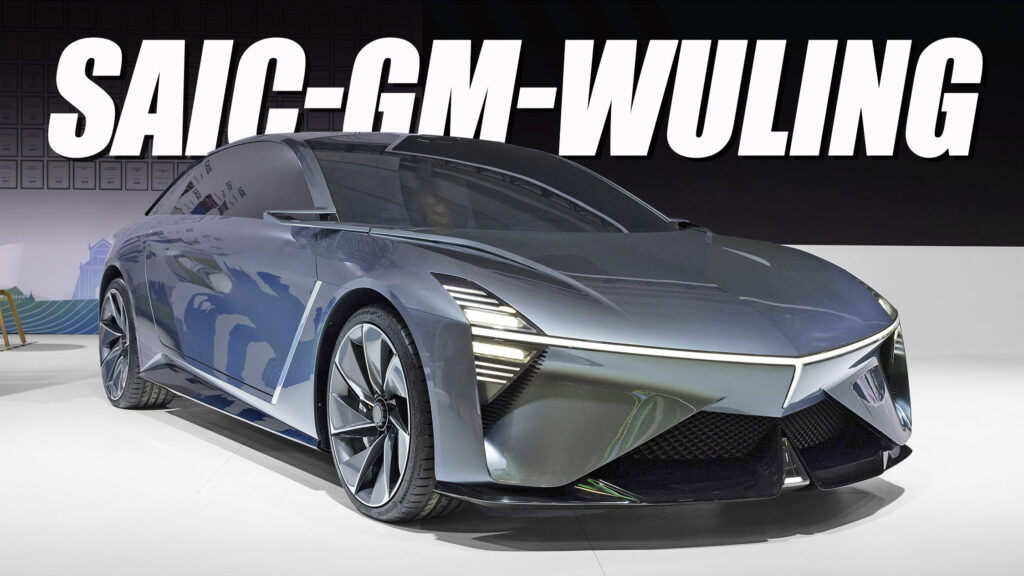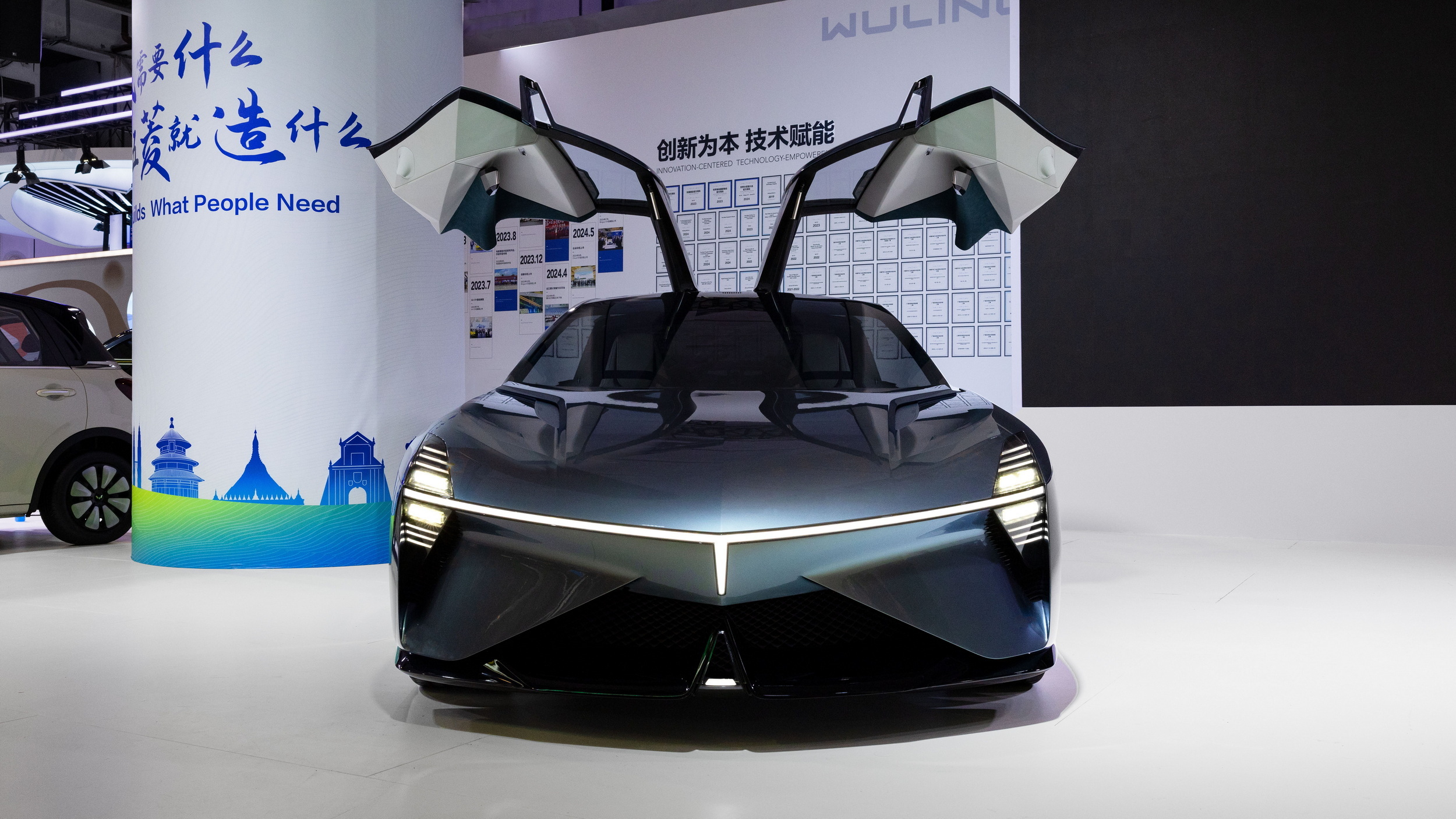- The “Light of ASEAN” is the first new energy concept from the SAIC-GM-Wuling JV.
- It previews the design of future production models destined for the ASEAN region.
- The concept features large gullwing doors, flying buttresses, and a Lancia-esque nose.
GM’s joint venture, SAIC-GM-Wuling (SGMW), is making a bid for attention with its first-ever new energy concept car, unveiled during the company’s future strategy presentation for the ASEAN markets. And what better way to stand out than with a futuristic, low-slung coupe featuring gigantic gullwing doors?
Called the “Light of ASEAN,” this concept serves as a preview of the design language set to shape future models in Southeast Asia. Powertrain details? Well, don’t hold your breath. The only confirmed fact is that it’s electrified—because, of course, it has to be.
More: Ford Boss Shaken After Secret Chinese EV Test Drive
Up front, the concept flaunts a Y-shaped lighting signature that bears more than a passing resemblance to the one seen on Lancia Pu+Ra HPE Concept. But the real showstopper here? Massive gullwing doors that swing open to reveal a four-seater cabin decked out with wraparound seats and a high-tech cockpit that screams “I belong in 2050.”
Around back, the fastback-style tail is accented by flying buttresses, slim full-width LEDs, and a sculpted rear fascia. Oh, and there’s a removable device back there that reportedly transforms into a robot, or so they claim. Although the concept lacks any emblems, the bumpers and wheels seem to borrow heavily from the SAIC-owned MG brand’s design playbook.
Photos: Autohome
If this concept ever made it to production, it’d likely fall under the joint venture’s “Red Badge” category, reserved for passenger vehicles. For those keeping score, the “Silver Badge” is for LCVs, and the all-electric models are marketed under the Baojun brand.
Alongside the concept reveal, SAIC-GM-Wuling took the opportunity to lay out its ambitious “One, Two, Three” plan for the ASEAN markets during the special event in Nanning, China. The strategy centers on building an industry chain for New Energy Vehicles (NEVs) in the region, with sustainability at the forefront of the initiative.
According to Autohome, the joint venture has already shipped more than 1.07 million vehicles to over 104 countries and regions beyond China’s borders, and it’s not slowing down anytime soon.
















